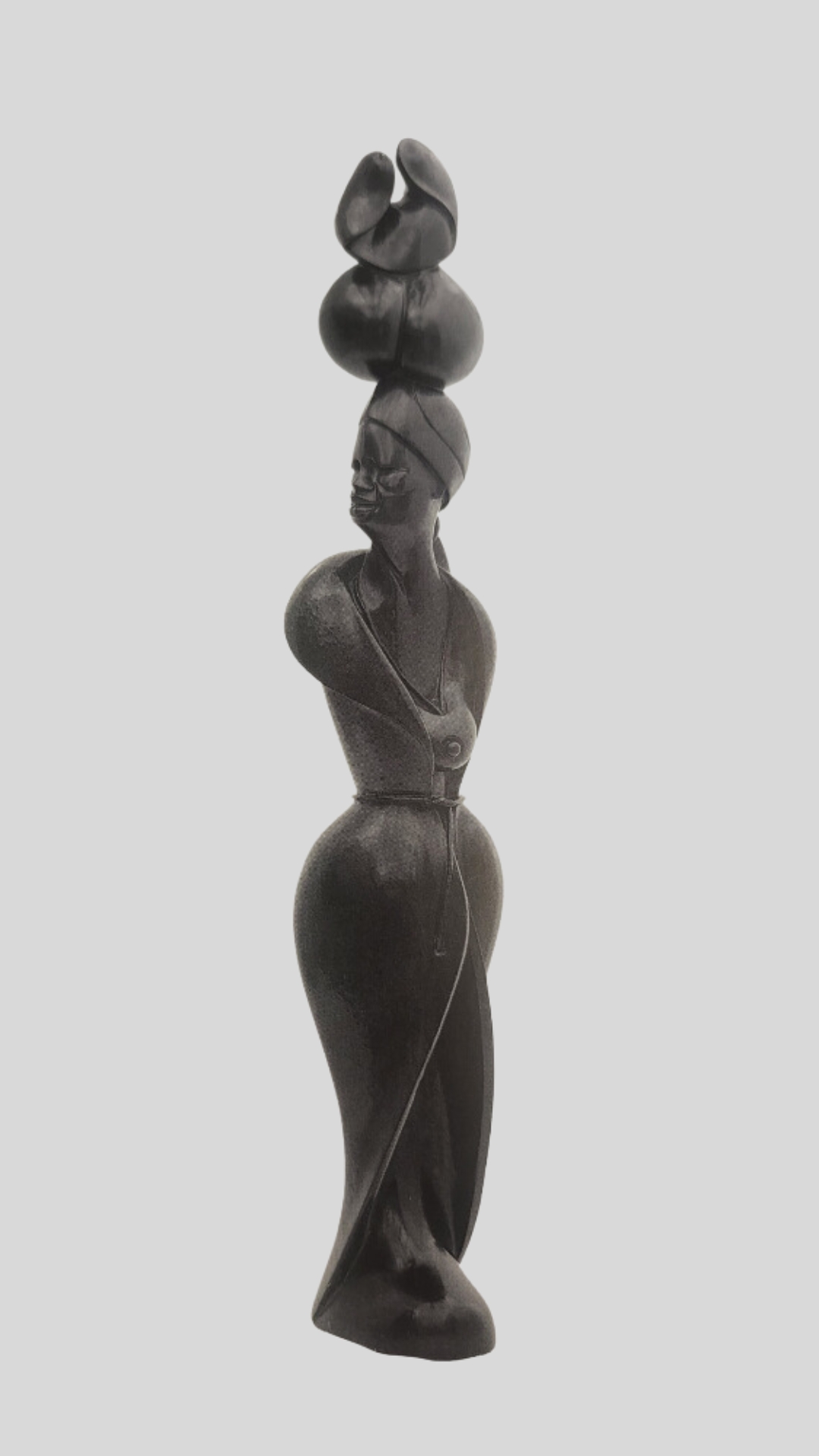Mercy (Shona sculpture by Sampson Kuvenguhwa)
Sampson Kuvenguhwa's sculpture, Mercy, is an example of how his art often portrays everyday life experiences and emotions. In the Mapiti style, which Sam Kuve frequently uses in his work, he blends realism with abstraction, creating pieces that capture both the physical and emotional aspects of his subjects.
In the sculpture, Mercy is depicted as a woman who has just received her alimony and is on her way back from buying groceries. The loaded groceries on her head are a common sight in many African countries, where it is customary for women to carry heavy loads on their heads as a means of transportation.
The fact that Mercy is thinking about her new boyfriend adds another layer of complexity to the sculpture, as it highlights the emotional state of the subject. Sam's use of the Mapiti style likely serves to convey the range of emotions that Mercy is experiencing, such as joy, relief, and hope for the future.
Overall, Sampson Kuvenguhwa's sculpture, Mercy, is a reflection of everyday life experiences and emotions, rendered in his unique Mapiti style. The sculpture captures the physical and emotional aspects of the subject, and serves as a reminder of the importance of empathy and understanding in our relationships with others.

Black Serpentine Stone. Click here to learn about the stones used in Zimbabwe by sculptors.
Sam's words: A woman carrying her groceries, walking ""Home"" after receiveing her alimony, thinking of her new boyfriend. Her name is Mercy.
Sculpted by Sampson Kuvenguhwa - Sam Kuve. Stands about 1m high.